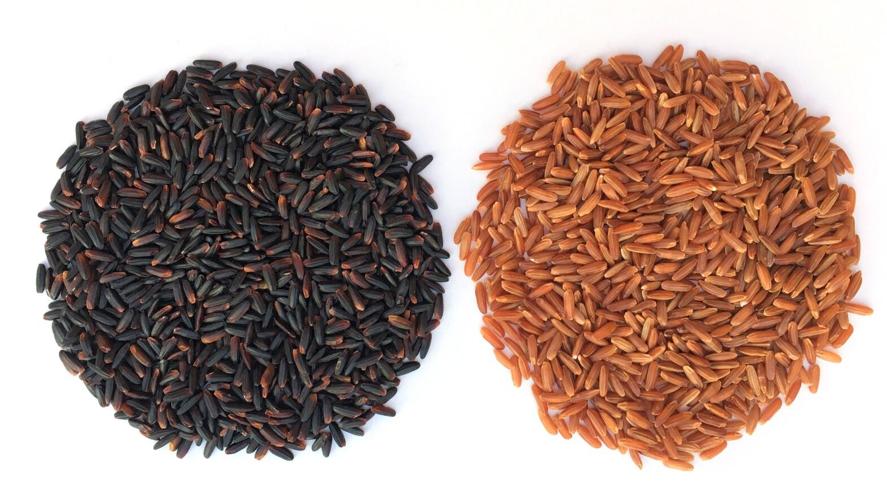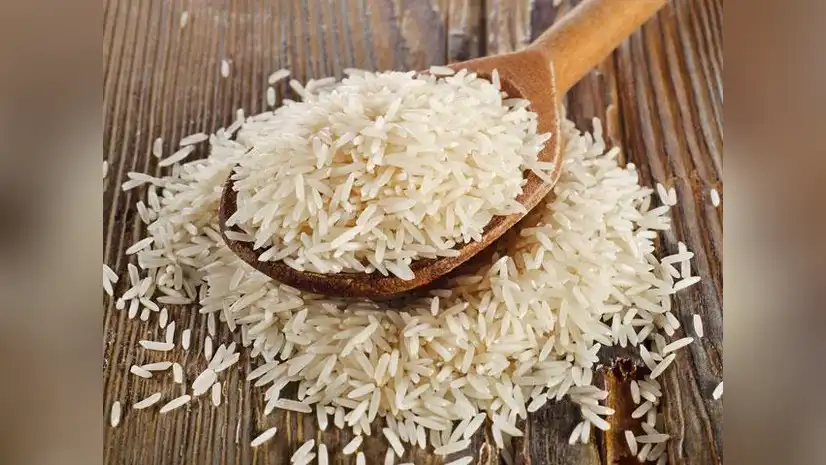Tags
Researchers develop new rice grains
Kathryn Markham USDA Agricultural Research Service

Americans have sung about amber waves of grain for years, but soon, they might have to add more colors to that ode, as the U.S. Department of Agriculture’s Agricultural Research Service releases newly developed purple and red varieties of rice. In addition to being beautiful, the novel grains pack a nutritional punch, and offer farmers a distinct new opportunity. The latest addition is a purple variety, named “USDA-Tiara.”
Anna McClung, research geneticist at the Dale Bumpers National Rice Research Center in Stuttgart, Arkansas, developed the pigmented purple and red varieties to enable American farmers to enter an important market. Today, she said, Americans can buy colored rice varieties, but the supply is predominantly from overseas.
“This is an opportunity for our domestic growers to have access to that market, which has greater economic potential than white milled rice,” she said.
Consumers have good reason to want the colorful options because they offer significant nutritional benefits. McClung said that with conventional rice, the bran is usually removed in the milling process, and it’s actually the bran layer that contains most of the nutrients. When the bran is removed, essentially only the starch is left. In the pigmented bran varieties, McClung and her team found that, in addition to the basic nutrients that brown bran possesses — vitamin E, fiber and other vitamins — there is additional nutritional value in the pigmented bran.
“The pigments that are purple and red are just like the pigments that you find in grapes and berries and different fruits and vegetables, and some of those compounds — tannins, flavonoids and phenolics — have been shown to have antioxidant properties, which have a potential health-beneficial effect.”
The purple rice, like most cultivated rice, originally came from Asia. In China, where it has been grown for millennia, it was known as “the emperor’s rice” because it was so revered that lore said only the emperor could eat it. In part its reputation was due to its nutrient content; the Chinese viewed it as beneficial for pregnant women and the ill.
“They understood a long time ago that the purple rice was special for some reason,” said McClung.
From China, the purple rice made its way to Brazil via a scientist who recognized its potential, improved it through careful breeding, and ultimately brought it to McClung’s attention. During the past 15 years, she has worked to breed an improved version of that strain from Brazil. It has since been released in the United States and commercialized; it is the parent of the new Tiara strain.
The red rice, which McClung also bred and named “Scarlett,” is the first red rice ever bred for commercial production in the United States. In the past, growers hesitated to grow red rice because it was regarded as a weed, with milled red grains causing rice to look “dirty” to consumers. While not native, the red rice had run wild and often inter-mingled with cultivated varieties, decreasing farmers’ net profit when the mixed rice was sold.
McClung was curious whether that disdained rice might have something to offer and set out to answer the question, “Do these weedy rice varieties, which have ancestral lineage in common with regular cultivated rice, possess some good genes — genes that, through years of selection to make milled rice look pretty to consumers, have accidentally been thrown away? Are there interesting genes there that could help our existing crop, and could we move those back into our current cultivars?”
The answer was yes.
“We found that the weedy species had yield-enhancing genes that we’d lost somewhere along the way,” McClung said.
She identified several farmers willing to try growing the new varieties. Today they rave about the results.
Relative to conventional varieties, “the flavor and aroma expression is infinitely more readable, more attractive and certainly more relevant,” said farmer Glenn Roberts, who grows the rice as part of his Anson Mills operation. “You can taste the difference.”
“My view is that as climate change advances, we’re going to be looking for more plant-based culinary options in general,” Roberts said. “In an increased plant-based environment, you want a rice that’s fast in and out of the field, that will stand well, that’s unique and that is absolutely high-yielding. Anna’s put out two rices that yield like a bandit, they’re quick in and out of the field, and they have unique culinary properties.”
https://agupdate.com/agriview/news/crop/researchers-develop-new-rice-grains/article_a310e426-cf63-11ee-90fd-b7a5519fc287.htmlPublished Date: March 8, 2024






